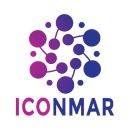Speaker
Description
Atherosclerosis continues to be a primary contributor to cardiovascular disease, mostly caused by the internalisation of oxidised low-density lipoprotein (oxLDL) and the ensuing development of foam cells. This work introduces bamboo charcoal (BC) as a biocarbon that mitigates atherogenesis through a dual-action mechanism: the physicochemical adsorption of oxLDL components and the competitive suppression of receptor-mediated uptake in macrophages. We assessed BC's molecular interactions and biological outcomes using a combination of in silico and in vitro techniques. Molecular docking and dynamics simulations revealed robust and persistent binding affinities between BC and oxLDL components (oxidised cholesterol and ApoB100), along with critical macrophage receptors such as LOX-1, SR-A1, SR-B1, and TLR-4. Quantum chemical calculations using Density Functional Theory (DFT) indicated the high reactivity of BC, with a narrow HOMO–LUMO gap and an obvious dipole moment. Further analysis revealed thermodynamically favourable binding to oxidised cholesterol. Experimental validation utilising RAW 264.7 macrophages demonstrated that BC markedly decreased total cholesterol accumulation and lipid droplet formation in cells treated with oxLDL. ELISA experiments demonstrated a significant reduction of TNF-α and IFN-γ secretion in supernatant of oxLDL-treated cells co-treated with BC. These findings demonstrate that BC effectively attenuates foam cell formation and inflammatory responses in macrophages by adsorbing oxLDL components and inhibiting receptor-mediated uptake. This dual mechanism highlights BC’s potential as a novel therapeutic or nutraceutical strategy for mitigating atherosclerosis progression.

